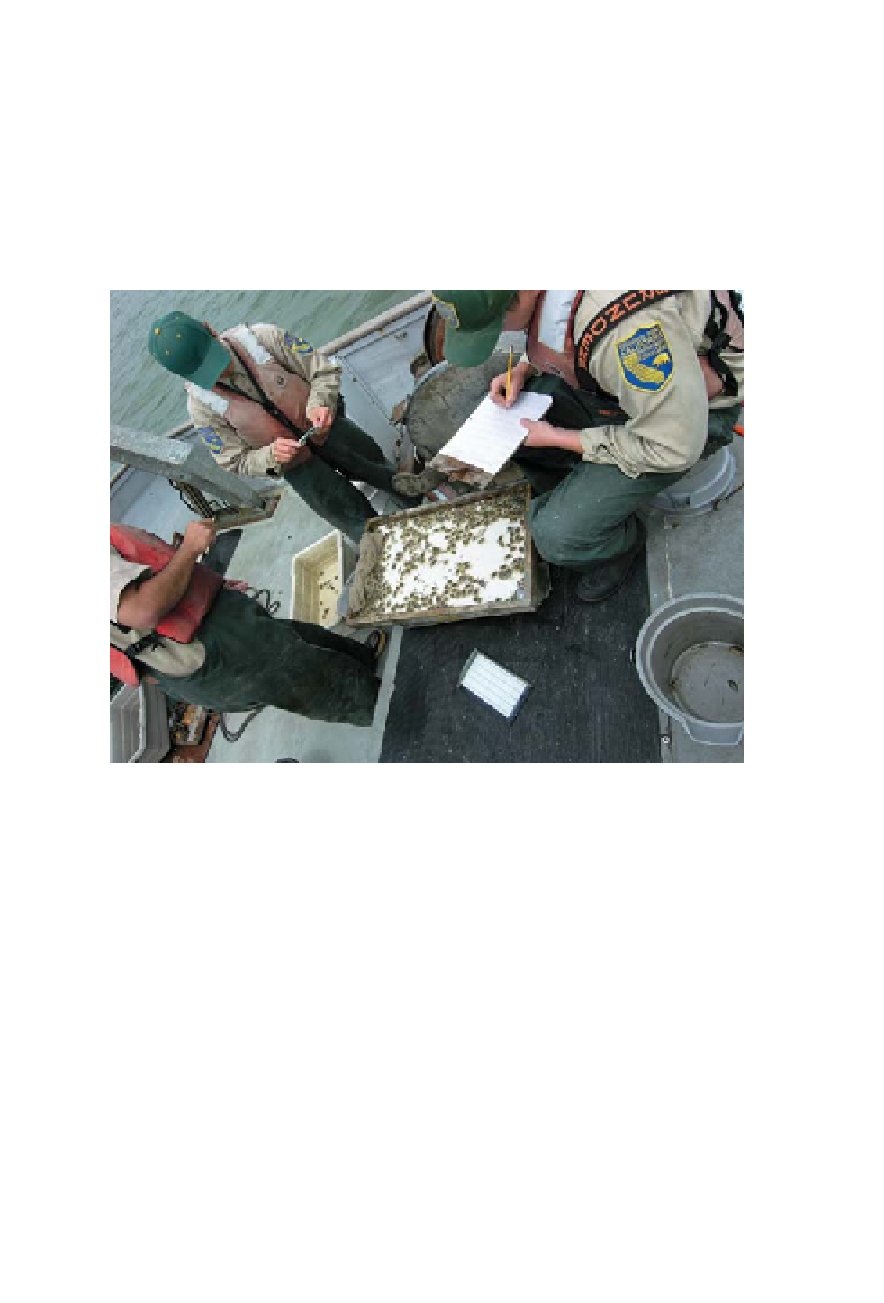Biology Reference
In-Depth Information
FIELDWORK: NETTING UNDERWATER LIFE
The net comes up wriggling from a five-minute drag along the bay bottom. Flashes
of white flap against the dark nylon mesh. While one crew member undoes the
cinch rope, another places a plastic tray beneath the dancing sac to catch its con-
tents. Out flop two halibut, three Bat Rays, a shark, and a pile of muck.
Scientists and crew aboard the state's
Longfin
research vessel count and sort juve-
nile crabs. (Kathy Hieb)
We are on the deck of the
Longfin
, a 42-foot research vessel the California
Department of Fish and Game uses to sample what lives in the bay. The crew—
scientists and technicians led by Kathy Hieb—quickly culls out the big creatures so
they can be measured and thrown back before suffocating on thin air. After wash-
ing the mud through a sieve, they pour the remaining contents of this “otter” trawl,
which had been dragged along the bottom, into another tray for further sorting.
A bell rings in the cabin and the crew winches in a second net. The captain
shouts “mid.” This net samples the open midwater zone where the bay's schooling
fish reside. Minutes later, the crew heaves in their second catch; drops instru-
ments into the water to measure temperature, salinity, and turbidity; and records
our location on the GPS unit.
As the
Longfin
sets off at high speed for the next sampling site, the crew un-
loads the midwater trawl. “Chovs,” announces one girl, as several hundred bait fish
bright as polished chrome fill the tray. Their number likely includes Northern An-
chovy, herring, and half a dozen kinds of smelt. But all of these slim silver fish look


